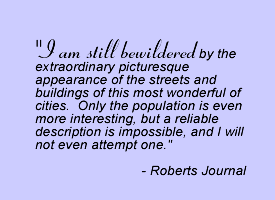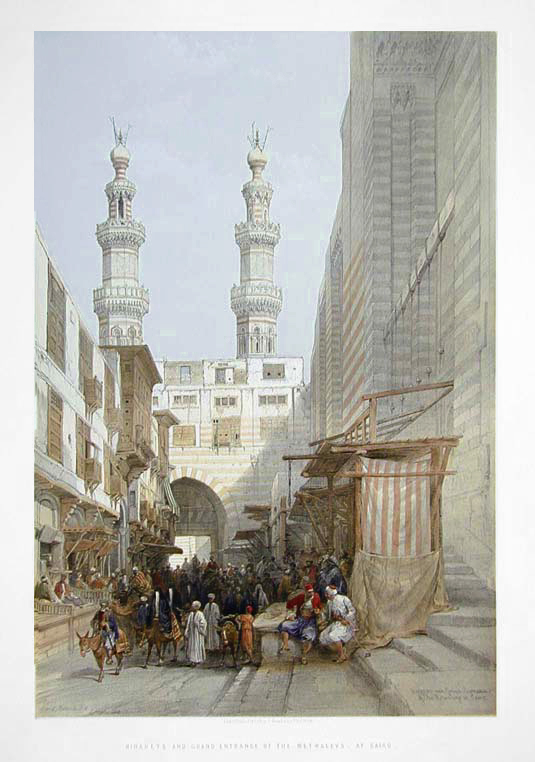



Roberts spent the next six weeks in and around Cairo, renting a house from which to explore this city of nearly 30,000. The architecture of the Arab world was at the time far less well known than that of the ancient pharaonic temples, and was set in the midst of the city's teeming throngs as opposed to the splendid isolation of the Nile monuments. This produced a totally different type of lithograph, full of urban life and detail. Roberts' images of Arabs and of ancient and modern Islamic architecture were the first window into this exotic world for many Europeans.Roberts produced approximately thirty images of Cairo and its environs, again encompassing some of his most famous and desired prints. (View the lithographs of Cairo.) Modern scenes throughout Egypt can still be found which are little changed from those depicted by Roberts over 150 years ago.
Roberts now began preparations for the next phase of his journey, an overland trek across the barren Sinai Peninsula and on to Jerusalem and the Holy Land. Roberts was a deeply religious man, and considered this portion of his journey to be the more important, since it would bring images of the sites of biblical events to those who had never had a chance to see them.
From this point on he would travel by camel caravan, hiring local tribe members as guides and protectors as he passed through their domains. Two new acquaintances from Cairo, John Pell and John Kinnear, would travel with him, and they convinced him to make a previously unplanned detour to the ancient Nabatean city of Petra, only recently re-discovered.
Before leaving Cairo, however, Roberts made one last visit to the Pyramid complex at Gizeh, some small distance from the city, and there he produced perhaps his most dramatic image, the "Approach of the Simoon, Desert of Gizeh". (View the lithographs of Gizeh.)